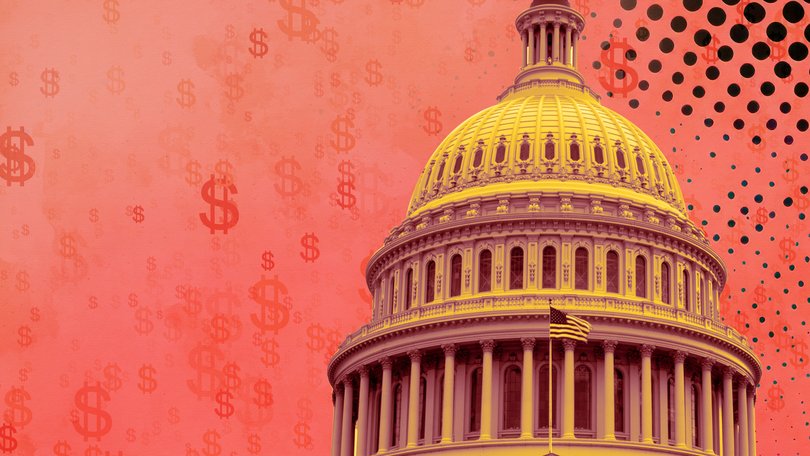THE ECONOMIST: Soaring bond yields threaten big trouble

Round numbers should not matter in financial markets, but they do. How many people pay attention to where 11-year Treasury bonds are trading? So seeing yields on America’s 30-year government debt stuck above 5 per cent since May 21 has given investors the shivers. The latest jump came shortly before the House of Representatives passed President Donald Trump’s “big, beautiful” — and deficit-widening — budget bill by one vote on May 22.
It is no wonder that investors are reassessing the risk of long-term lending to Uncle Sam. Even before the budget bill cuts tax revenues, America’s government has borrowed $US2 trillion ($3trn) (or 6.9 per cent of GDP) over the past year.
Combined with the chaotic policymaking of recent months, and Mr Trump’s threats against America’s institutions, that has put the once-unquestionable haven status of Treasuries up for debate. But for money-managers looking to diversify, there is another headache. The debt of other governments looks newly risky, too, with long-term yields rising across much of the rich world.
Sign up to The Nightly's newsletters.
Get the first look at the digital newspaper, curated daily stories and breaking headlines delivered to your inbox.
By continuing you agree to our Terms and Privacy Policy.Britain’s 30-year borrowing cost has hit 5.5 per cent, its highest since 1998, aside from a spike in April. Germany’s, at 3.1 per cent, is within touching distance of its dearest since the euro zone’s debt crisis in the early 2010s. In intraday trading on May 21, the yield on Japanese 30-year government bonds rose to nearly 3.2 per cent, setting a new record.
In part, all this is because what happens in America does not stay in America. The country’s economy is so big, accounting for 26 per cent of the world’s output, that its outsize government deficit tilts the balance of savings and investment globally, raising the cost of capital.
Higher returns on Treasuries might also lead traders to prefer them to other sovereign debt unless it, too, yields more. Meanwhile, it is hardly just America’s economy that Mr Trump’s policies threaten. Uncertainty over tariffs, for example, muddies the outlook for inflation and growth everywhere, prompting investors to demand a higher risk premium. Some might also conclude that politicians in other countries will be tempted to imitate America’s profligacy.
Yet the rest of the world is also quite capable of generating its own pressure. Some comes from good news rather than bad. Much of the rise in German borrowing costs followed an announcement in early March that its government would invest far more in infrastructure and defence. Since the popular view has long held that Germany spends too little rather than too much, this has raised expectations of its future growth, and hence the returns available on its sovereign debt.
In Britain and Japan, yields are climbing for more worrying reasons. One is that inflation has again turned surprisingly hot. Consumer prices in Britain rose by 3.5 per cent in the year to April, faster than the market had expected and well above the previous month’s reading of 2.6 per cent.
In Japan, “core” consumer prices rose by 3.5 per cent in the year to April, the sharpest climb since the inflationary surge in 2022 and 2023. Inflation prompts traders to bid up bond yields both because it erodes the value of their coupons and principal repayment, and because it leads them to expect higher interest rates from central bankers.
At the same time, write analysts at Goldman Sachs, a bank, a structural source of demand for long-dated government debt is drying up. “Asset-liability managers”, meaning institutions such as defined-benefit pension funds that use the fixed income streams from bonds to guarantee their future liabilities, have long been big buyers.
But yields have now been high enough for them to lock in these cash flows at attractive prices for years, meaning many can afford to withdraw from the market. As the supply of bonds remains high, fuelled by fiscal deficits and central banks shrinking their balance-sheets, this sets the stage for long-term borrowing costs to rise even more.
Such pressure applies as much to American Treasuries as to other countries’ government debt. For years, the received wisdom among bond traders was that the 30-year yield “couldn’t” go much above 5 per cent, or stay there for long.
The argument was that, at that level, long-term investors such as pension funds and university endowments would snap up every bond they could get their hands on. That, though, is where 30-year yields now sit. If the big buyers have already filled their boots, today’s fiscal worries could get a whole lot worse.
